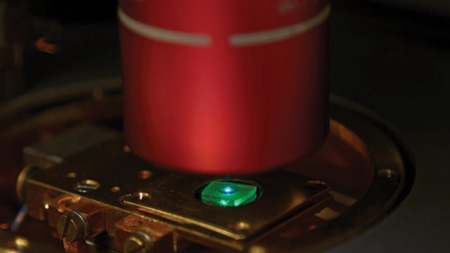Researchers from ETH Zurich, IBM Research Zurich, Empa (also in Zurich, Switzerland), and colleagues in America have made headway in understanding why quantum dots composed of cesium-lead-halide (CsPbX3) compounds are much brighter and radiate much faster than other engineered quantum dots.

At room temperature, most quantum dots emit light with a typical radiative decay time of 20 ns. However, CsPbX3quantum dots emit light with a strongly accelerated radiative decay, both at room and cryogenic temperatures. To unveil the secret, the authors used experimental data obtained at the single-particle level, in combination with theoretical work led by Alexander Efros, a theoretical physicist at the Naval Research Laboratory (Washington, DC). They discovered that the emission originates from bright triplet states—no dark states were involved in the radiation process. Already, the dots are being explored for displays, light-emitting diodes, and for optical communications—the researchers say this quantum-dot breakthrough could enable the development of more efficient optoelectronic devices. Reference: M. A. Becker et al., Nature, 553, 7687, 189–193 (Jan. 11, 2018).
(From:https://www.laserfocusworld.com/articles/print/volume-54/issue-02/newsbreaks/perovskite-quantum-dots-are-brighter-faster-than-other-dot-designs.html)